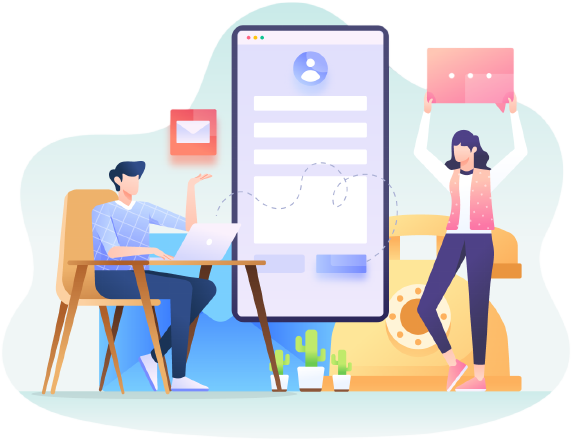FAQ
What is web development?
Web development is the process of building and maintaining websites and web applications, including everything from simple static pages to complex dynamic platforms.
What technologies are used in web development?
Common technologies include HTML, CSS, JavaScript, React, Node.js, Django, and more, depending on the project requirements.
How long does it take to build a website?
The timeline depends on the complexity and features required. Simple sites can take days, while complex applications may take months.
How can Easiio help with my web project?
Easiio provides consulting, design, development, and support for web projects of all sizes, tailored to your business needs.
What is an AI chatbot?
An AI chatbot is a software agent that uses natural-language processing (NLP) and machine-learning models to understand user queries and respond conversationally—24/7, without human intervention.
Which AI models do you use for chatbots?
We integrate OpenAI GPT-4o, Google Gemini, and open-source LLMs such as Llama 3, choosing the model that best balances accuracy, latency, cost, and on-prem security requirements.
Can the chatbot connect to my existing database or API?
Yes. We build a secure middleware layer that lets the chatbot pull real-time data from REST / GraphQL APIs, SQL/NoSQL databases, or third-party SaaS platforms while enforcing role-based access control.
How do you train the chatbot on my company’s knowledge?
We ingest PDFs, webpages, and structured data into a vector store (e.g. Pinecone or Weaviate) and fine-tune or “RAG-augment” the base model so it answers using your content while keeping proprietary data isolated.
Is multilingual support available?
Absolutely. The underlying models support 50 + languages, and we can add locale-specific fallback answers, translation layers, and right-to-left (RTL) UI adjustments as needed.
How much does an AI chatbot cost to run?
Costs depend on traffic volume and model choice. Cloud LLMs start around US$0.50 – 2.00 per 1,000 messages; self-hosted open-source models mainly incur GPU server costs. We provide a detailed ROI sheet during scoping.
What about data privacy and compliance?
We support on-prem or VPC deployment, anonymise user data, and follow GDPR/CCPA guidelines. Audit logs and data-retention controls are included for regulated industries.
Can the chatbot hand off to a human agent?
Yes. When confidence drops below a threshold or on user request, the bot triggers live-chat escalation with full conversation context so human agents can pick up seamlessly.
How long does it take to deploy an AI chatbot?
A pilot bot using your FAQ data can go live in 1–2 weeks. A fully integrated, multilingual production system with analytics dashboard typically takes 4–6 weeks.
What ongoing support do you provide?
We offer SLA-backed monitoring, monthly retraining, prompt-engineering tweaks, usage analytics, and option-based hosting so your chatbot continually improves with new data and user feedback.







